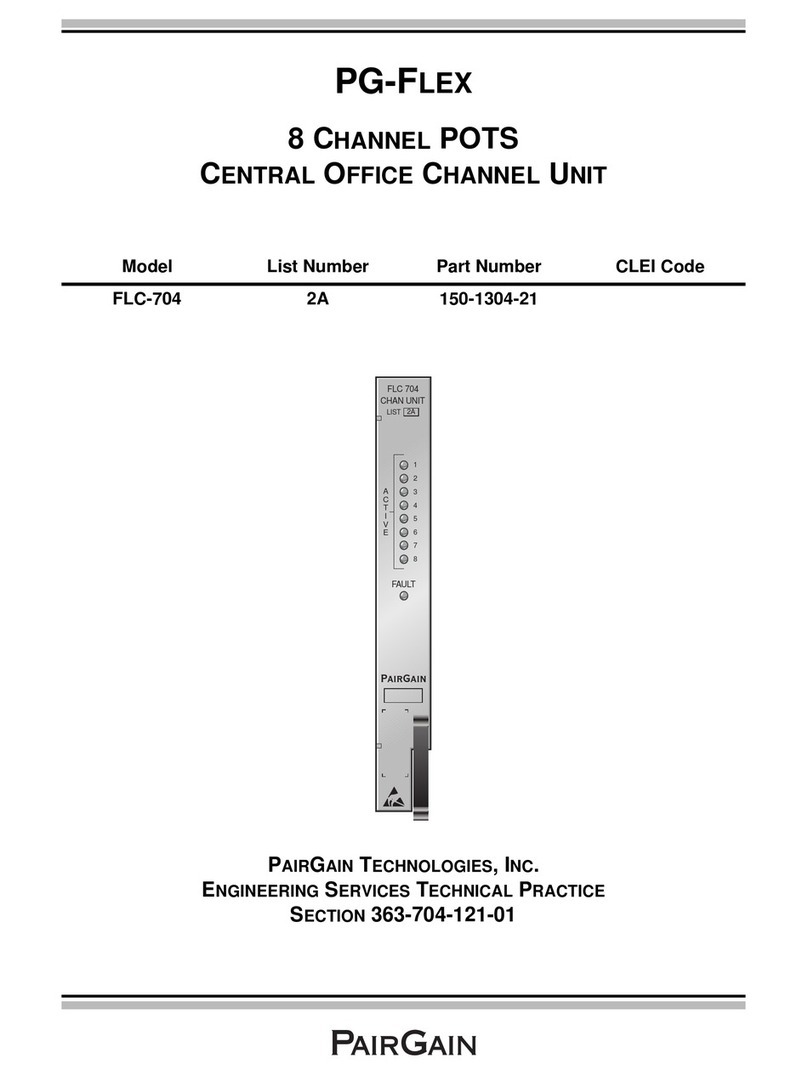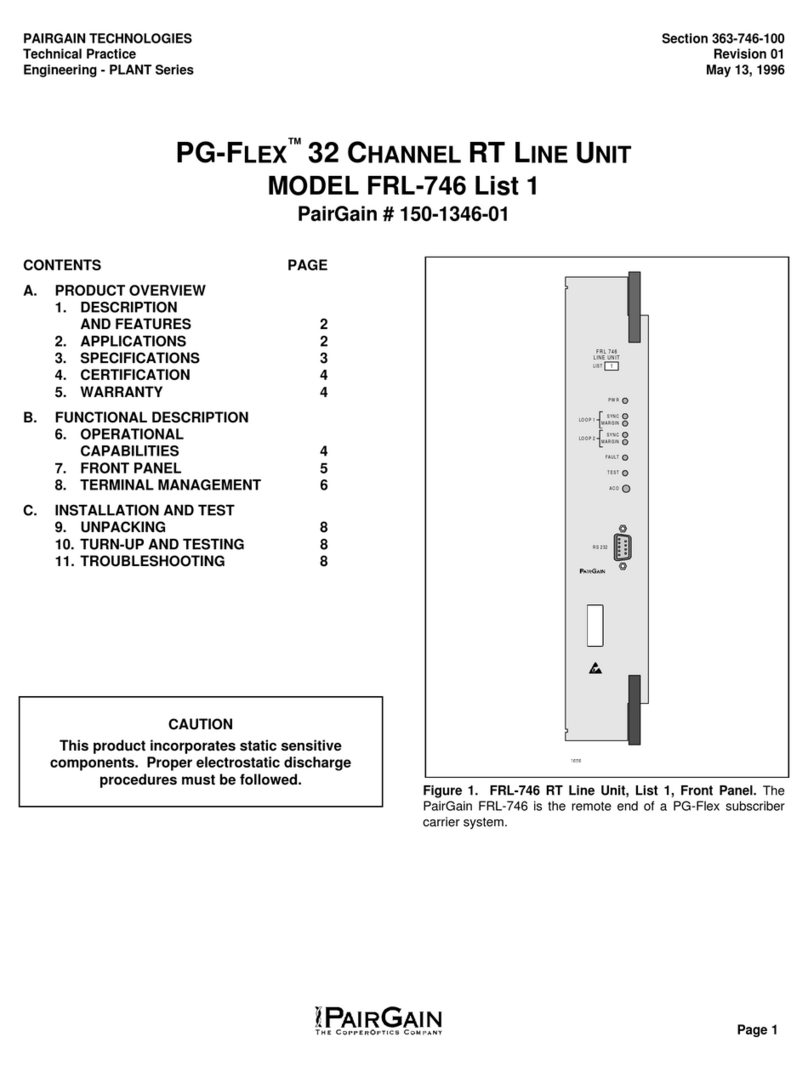PairGain PG-Flex FRC-754 L4 User manual
Other PairGain Network Hardware manuals

PairGain
PairGain 150-1140-51 User manual
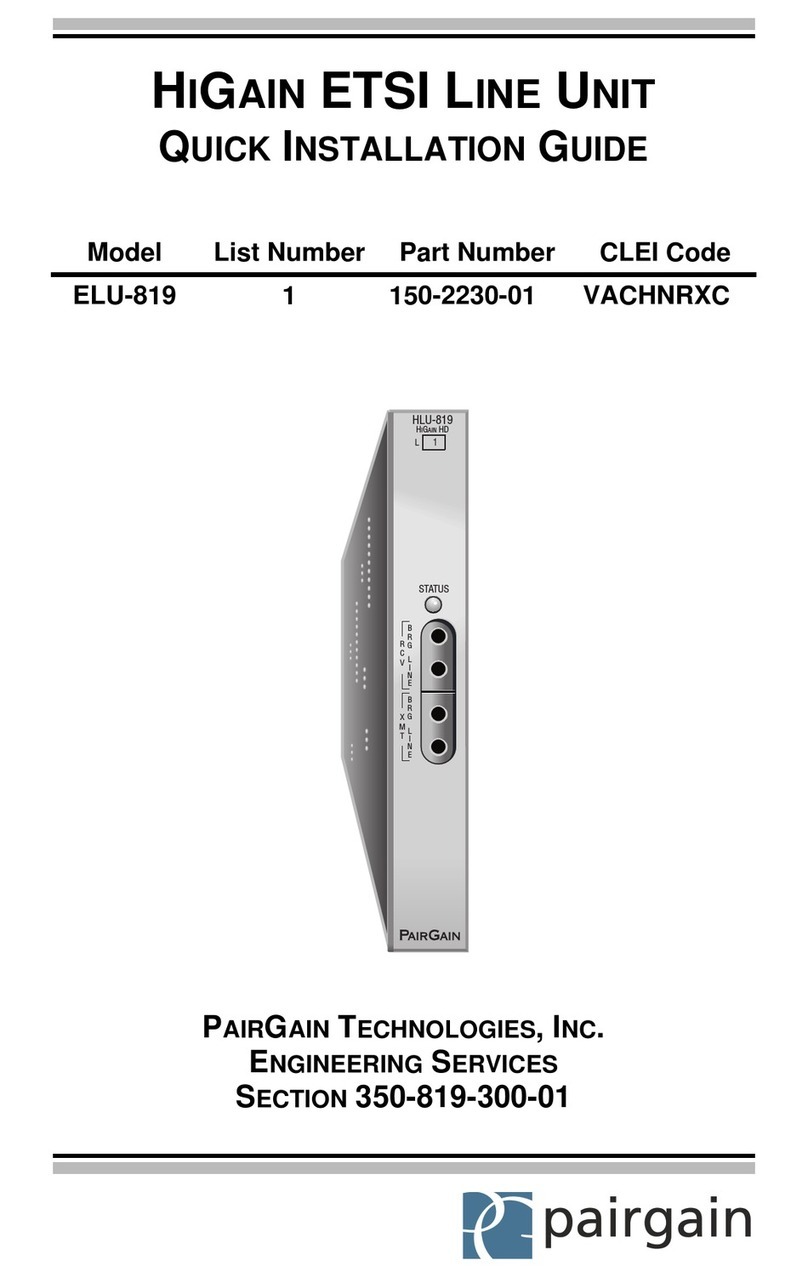
PairGain
PairGain HiGain ELU-819 User manual
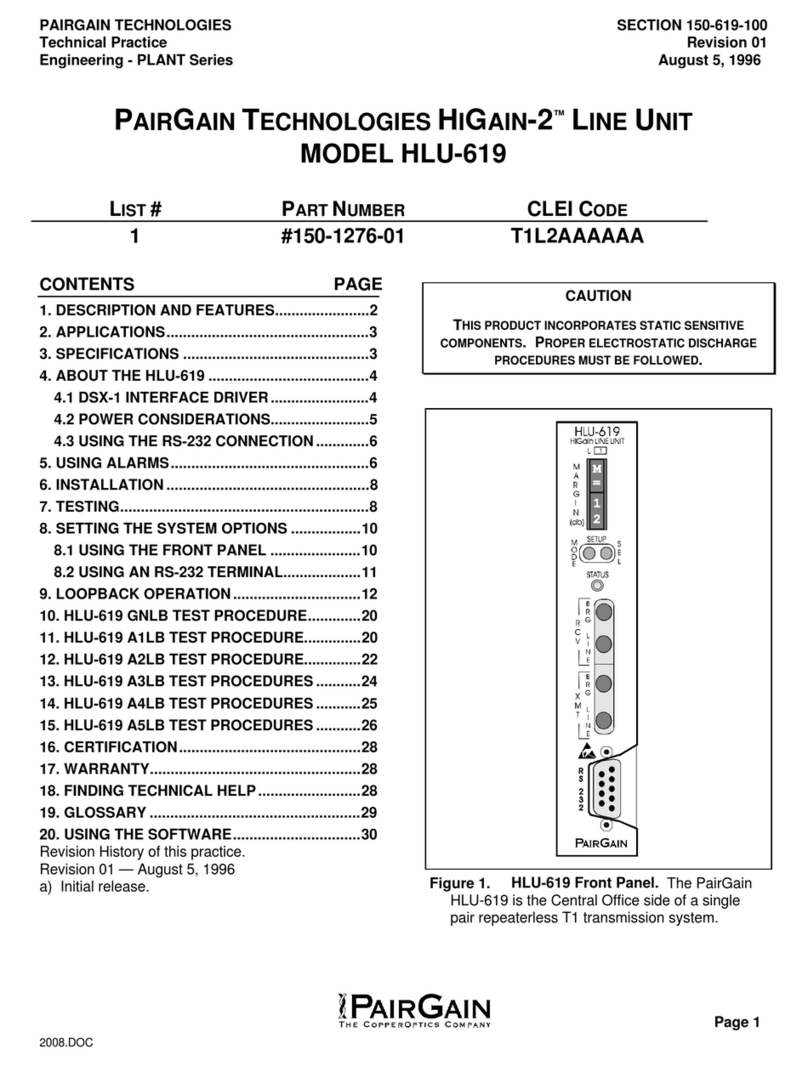
PairGain
PairGain HIGAIN-2 HLU-619 User manual
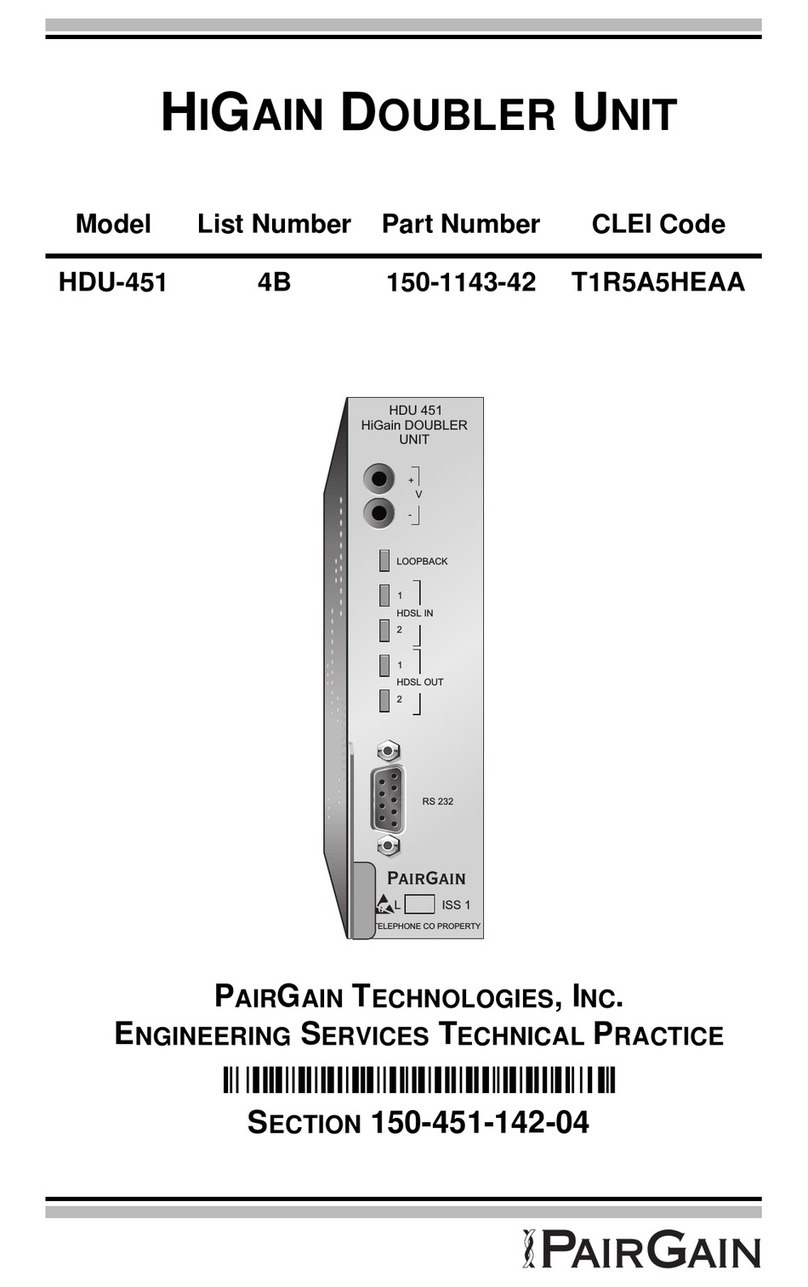
PairGain
PairGain HiGain HDU-451 User manual
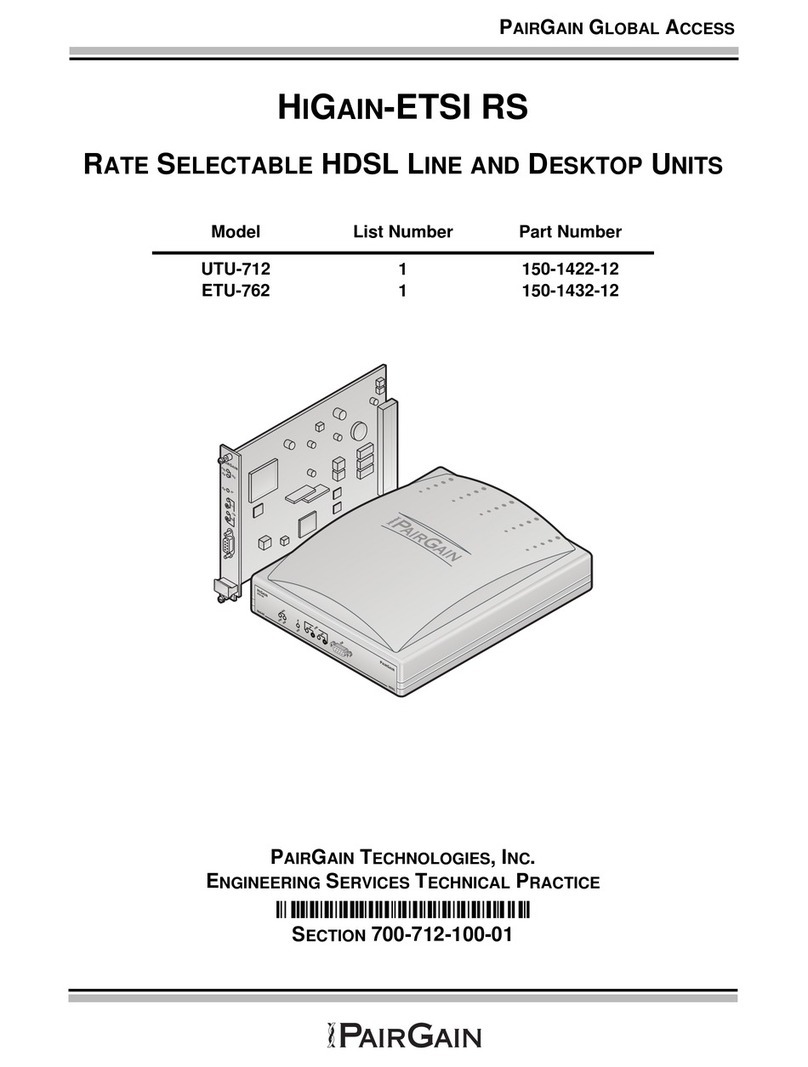
PairGain
PairGain HiGain-ETSI RS UTU 712 User manual
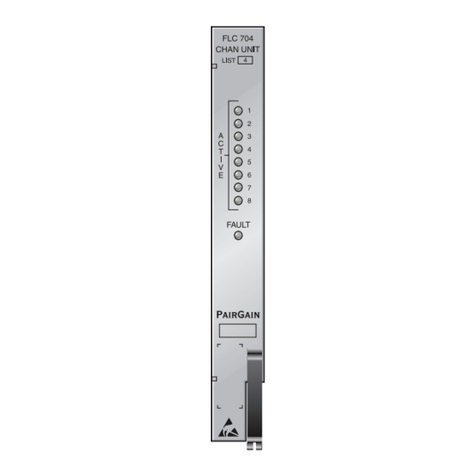
PairGain
PairGain PG-Flex FLC-704 User manual
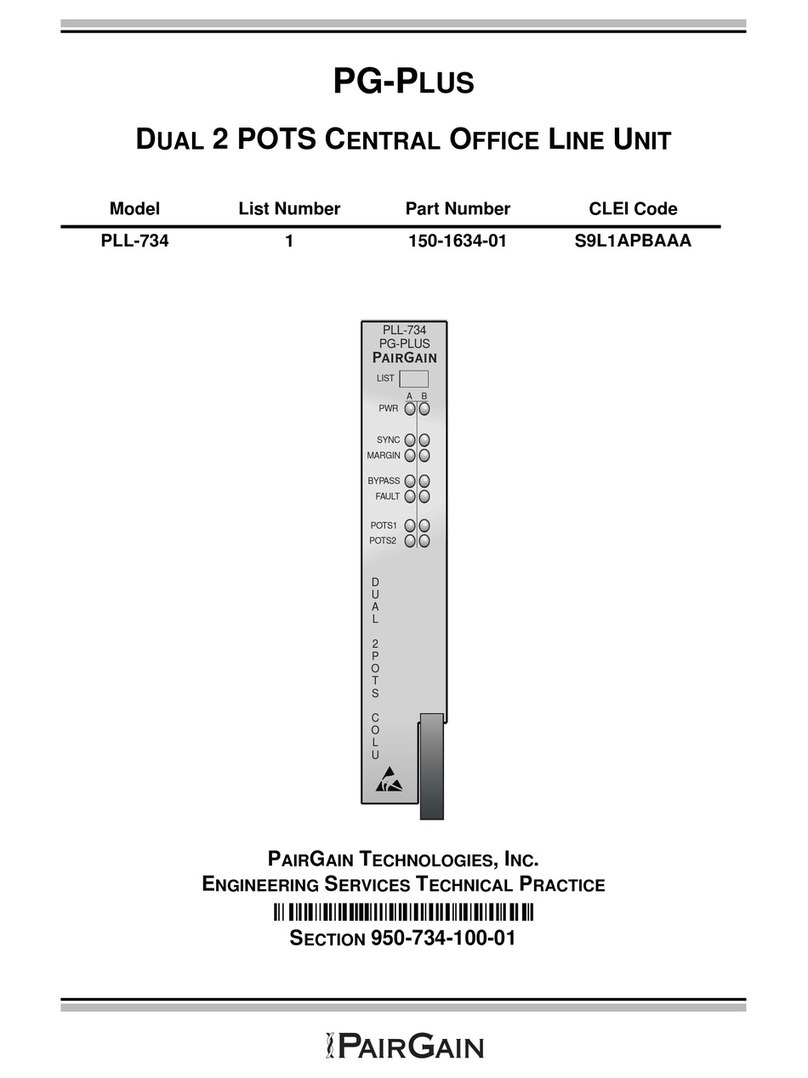
PairGain
PairGain PG-PLUS PLL-734 User manual
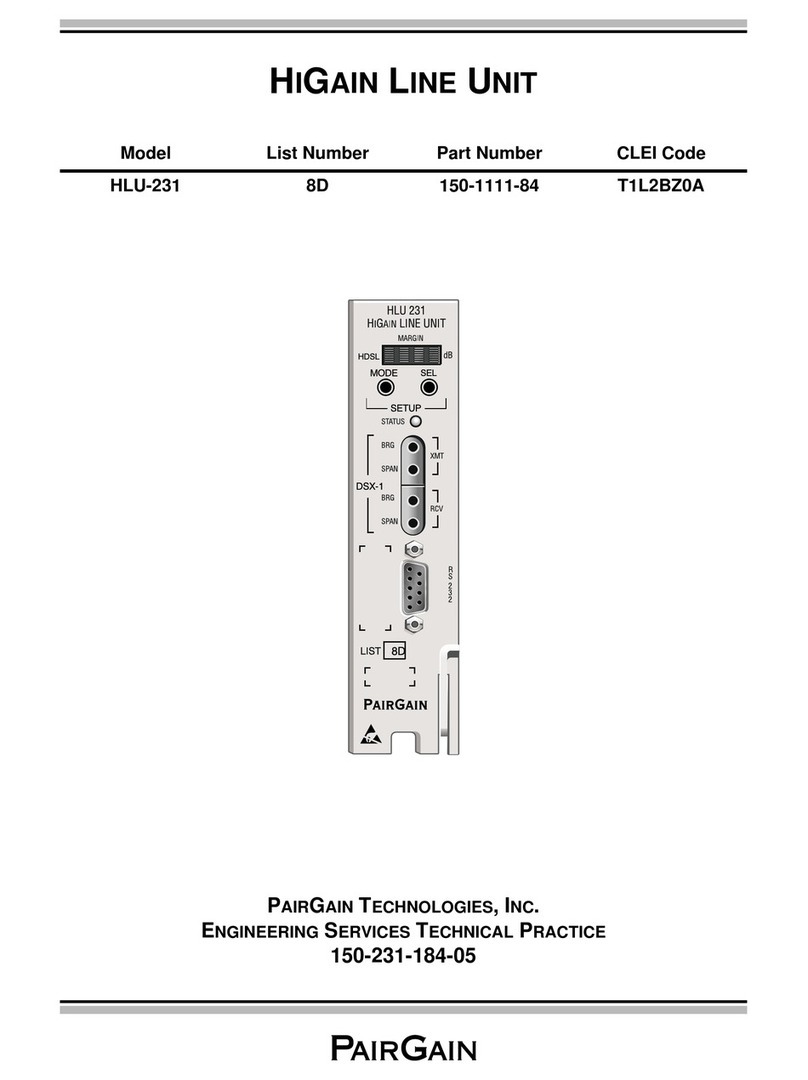
PairGain
PairGain T1L2BZ0A User manual
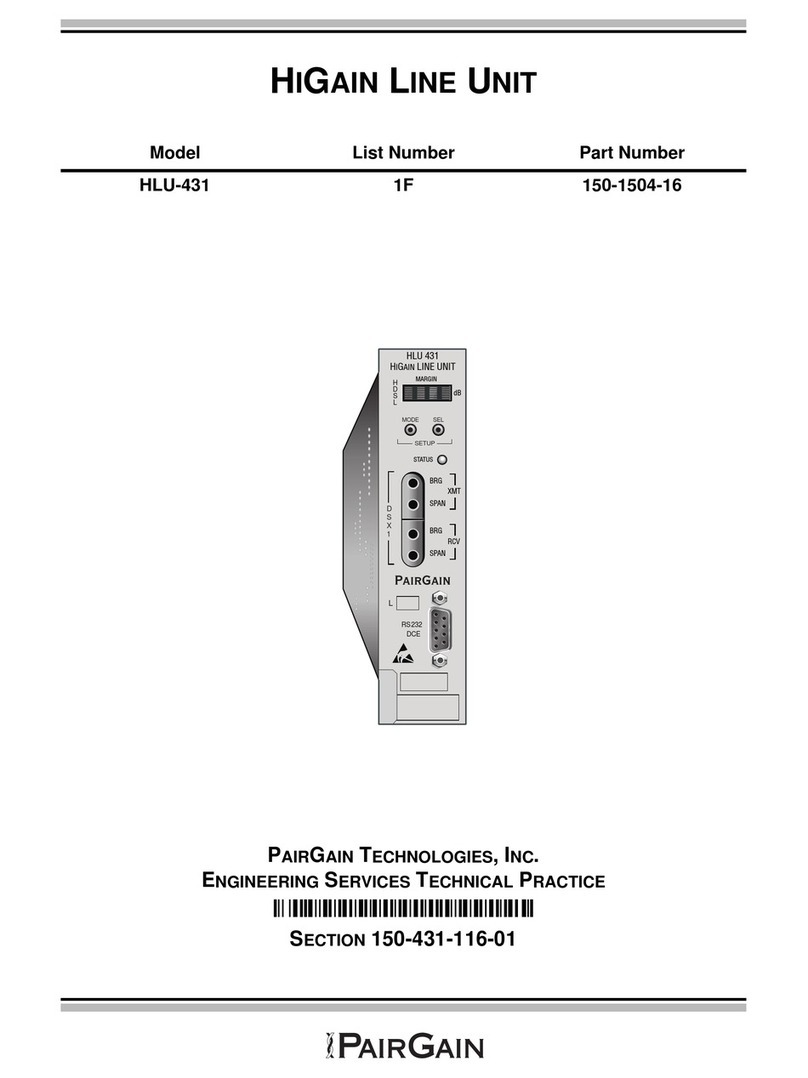
PairGain
PairGain HLU-431 User manual

PairGain
PairGain HiGain HLU-819 User manual
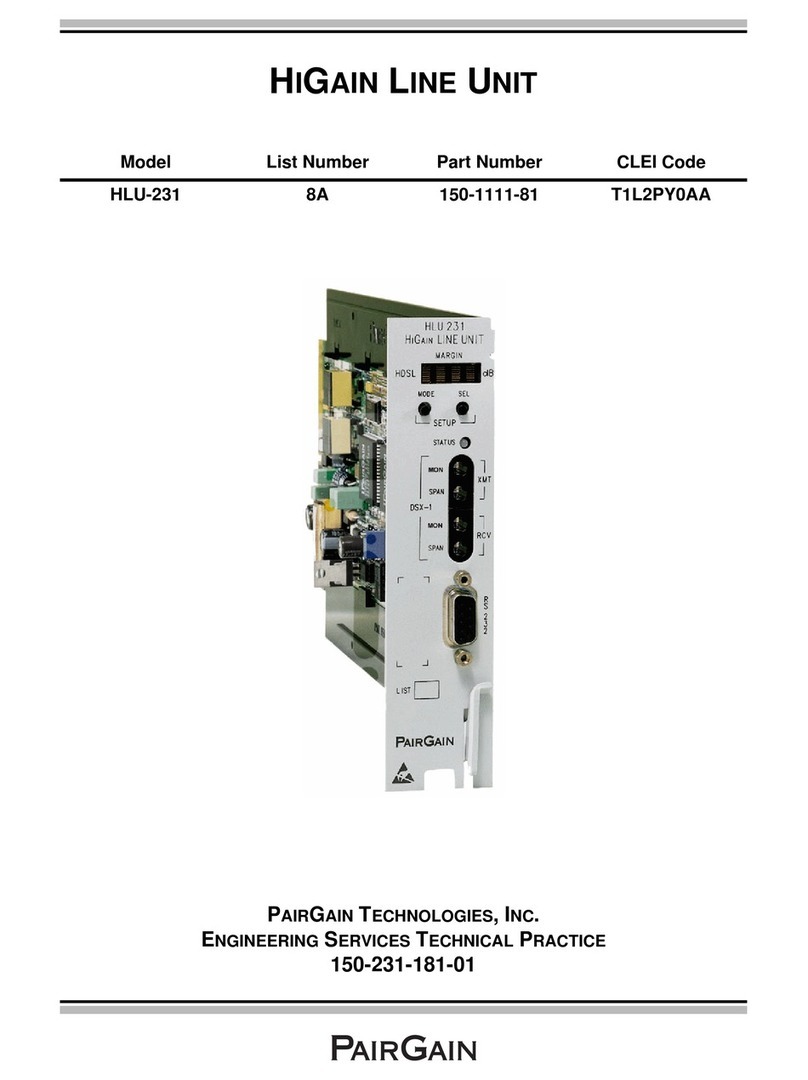
PairGain
PairGain T1L2PY0AA User manual

PairGain
PairGain PG-Flex 8 FLC-704 User manual

PairGain
PairGain HLU-431 User manual
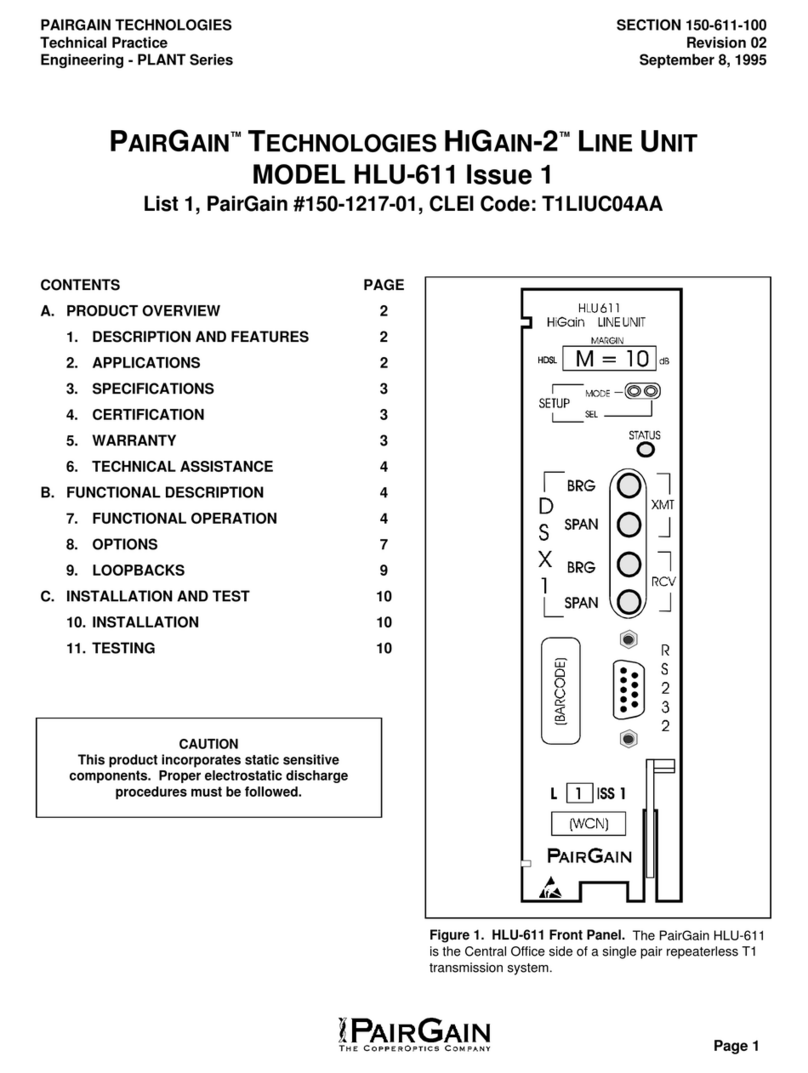
PairGain
PairGain HIGAIN-2 HLU-611 User manual
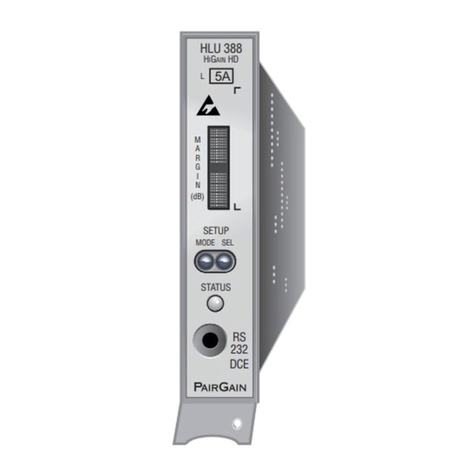
PairGain
PairGain T1L2N20A User manual
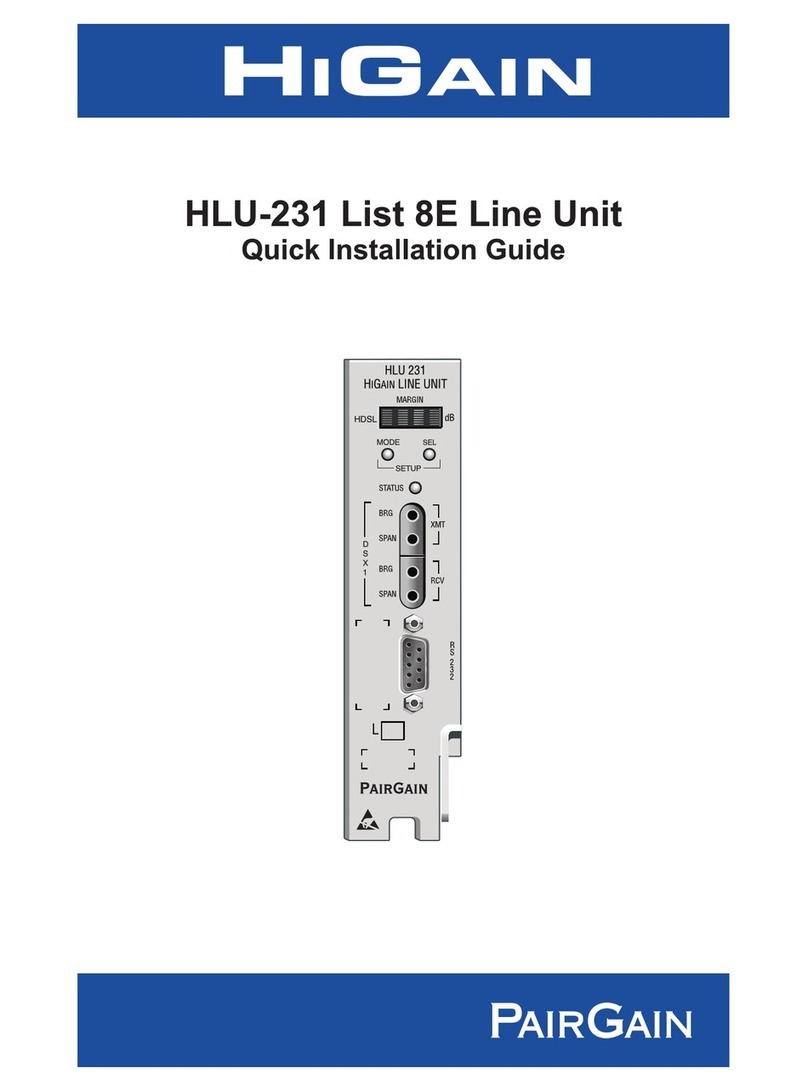
PairGain
PairGain HLU-231 User manual
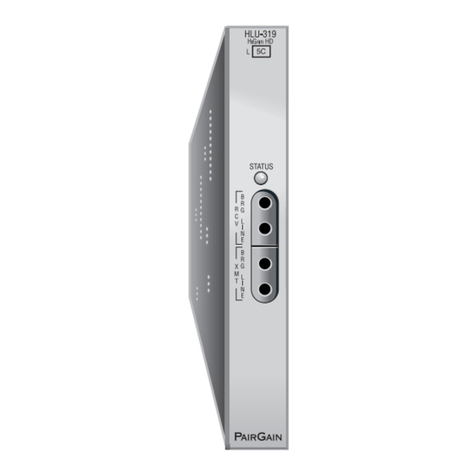
PairGain
PairGain HLU-319 User manual
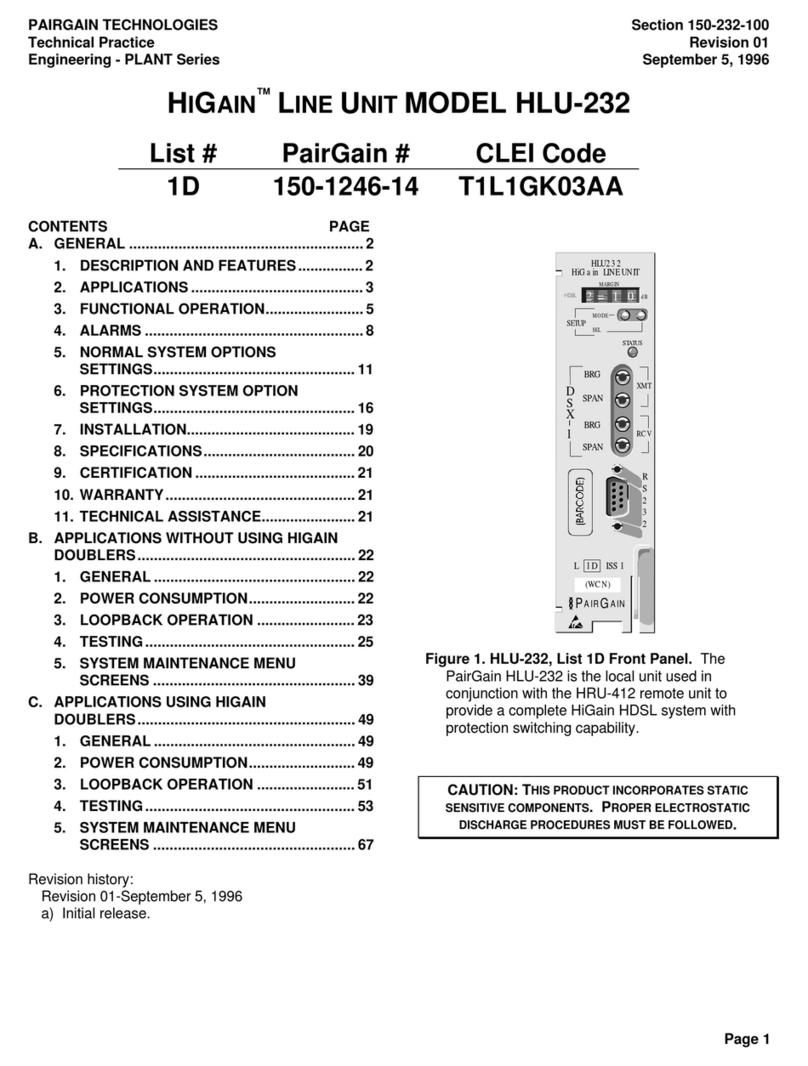
PairGain
PairGain HIGAIN HLU-232 User manual

PairGain
PairGain HLU-319 User manual
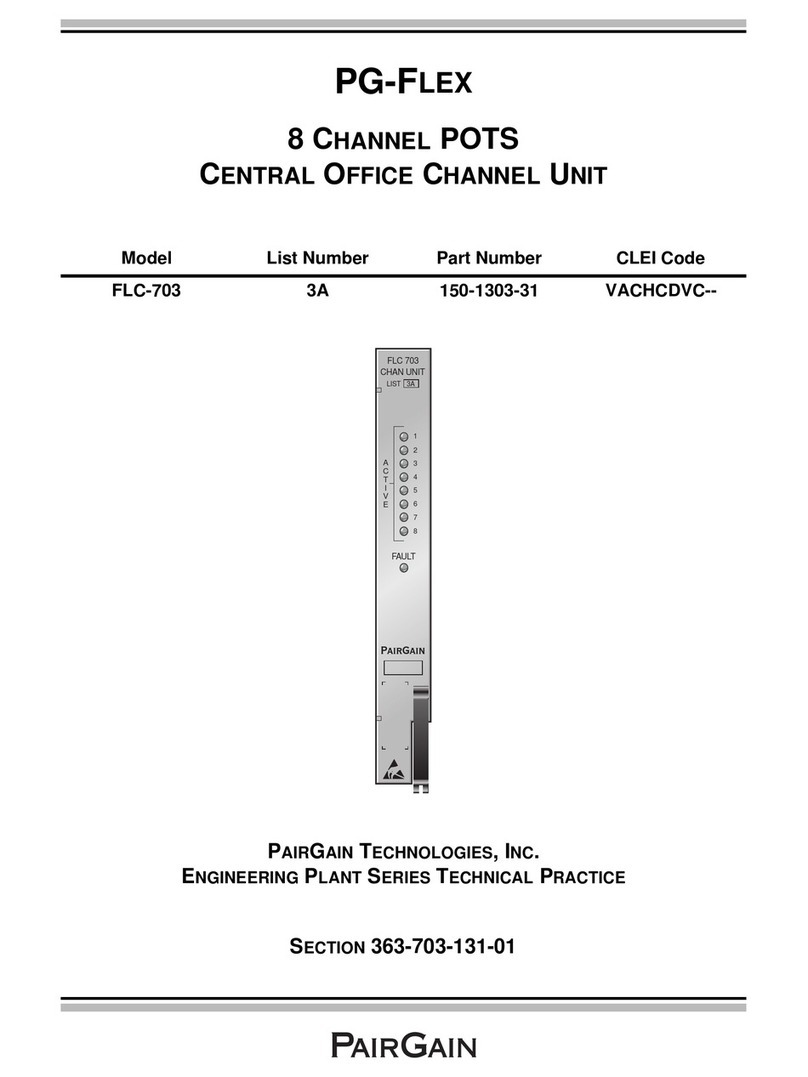
PairGain
PairGain FLC-703 User manual
Popular Network Hardware manuals by other brands

Cisco
Cisco CGR 1000 Series Getting connected guide

Matrix Switch Corporation
Matrix Switch Corporation MSC-HD161DEL product manual

National Instruments
National Instruments NI 653x user manual

B&B Electronics
B&B Electronics ZXT9-IO-222R2 product manual

Yudor
Yudor YDS-16 user manual

D-Link
D-Link ShareCenter DNS-320L datasheet
